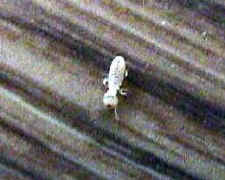
Termites
Termites and other wood destroying insects are a major concern for anyone when it comes time to purchase a home. Most lending agencies require an official Wood Destroying Insect Inspection by a contractor that is licensed with the Structural Pest Control Board. The inspection is designed to let the lending agency know that the home is basically structurally sound. It is not a structural damage report or even a warranty as the absence of the insects. It is a visual inspection only. There are numerous areas of the property that are not accessible to the inspector for inspection. While there is no way to be assured that the home is termite free, a visual inspection is still an invaluable service.
The Wood Destroying Insect Inspection is also designed to notify customers of potential problem areas know as conducive conditions. Conducive conditions are conditions that will invite the termites and other insects into the home. If you are getting your home ready to put on the market, there are some things that can be done to help insure that the inspection goes smoothly.
